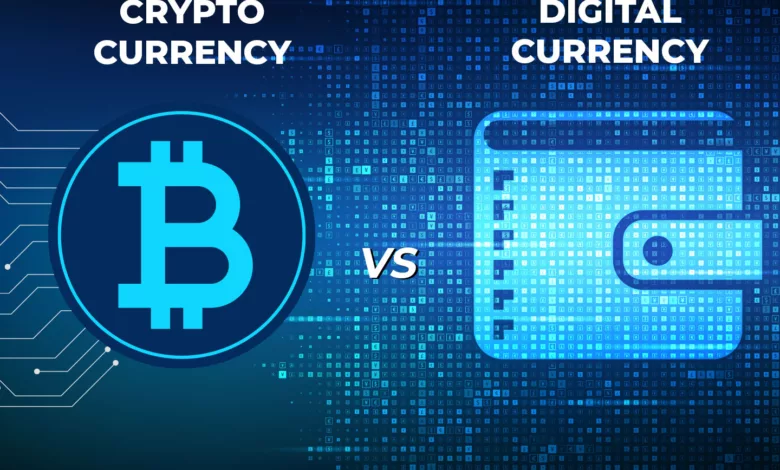What makes Cryptocurrency and Digital Currency different from each other?

Are cryptocurrency and digital money the same thing? Not quite! We’ll explore what these two forms of currency are and how they’re different, as well as their respective pros and cons. Let’s know more about the differences and similarities between digital money and crypto. For more information, you can go through this link before investing in bitcoin.
What is Cryptocurrency?
Digital money isn’t the same as cryptocurrencies. Both are types of virtual cash, though they possess distinct qualities. Ever since the initial crypto, Bitcoin, was introduced in 2009, cryptocurrencies have been in existence for some time today. It’s been on the media for a couple of years now, and you’ve most likely heard about it. But even today, no one knows who created and released Bitcoin – Satoshi Nakamoto remains hidden in mystery. Nowadays, every cryptocurrency is available on a blockchain, an immutable ledger of past information. Every transaction which is completed making use of a cryptocurrency is captured on the indigenous blockchain. Every blockchain contains a large line of blocks where limited numbers can be saved. The quantity of transactions kept inside the block is dependent upon the block size.
Cryptocurrencies are usually decentralized but might have central qualities. Decentralization is a term for a method which distributes data as well as network power over several nodes or connection points. This guarantees that no person has majority command over the system, which is great for protection as well as transparency. On the flip side, central networks have a small group of decision-makers who have much of the influence, if not every, which many view as difficult.
What is Digital Currency?
Digital currency is an umbrella term that can comprise a variety of different assets. While digital currencies include cryptocurrencies, not all digital currencies are necessarily crypto-based. An online form of money is commonly known as digital money. This includes traditional legal tender such as the British Pound, US Dollar, Japanese Yen, Indian Rupee and Canadian Dollar – though their digital forms are not exclusive. With more and more wealth in our technologically-driven world existing digitally, it’s no surprise why digital currencies have become increasingly popular.
Digital money has revolutionized the way we make payments, allowing us to do so entirely virtually. Around 92%-93% of currencies worldwide are already in a digital format – an indication of just how essential virtual methods have become. Consequently, our transactions can now be made in any capacity – whether you’re purchasing something online or in-store, subscribing to services, donating funds and more – all with digital tender.
Difference between Cryptocurrency and Digital Currency
Cryptocurrencies are based on blockchain technology, whereas digital currencies do not need a blockchain to function. Even though they may be beneficial for virtual assets and trades, cryptocurrencies always exist on the blockchain while digital currency may not require it. In terms of inherent worth, digital currency and cryptocurrency are fairly similar. Most cryptocurrencies have no underlying collateral like that found with traditional or digital currencies. However, some forms of stablecoin cryptocurrency can be backed by real-world assets such as gold, silver or oil; this gives the crypto an objective value and provides support for its worth.
Digital currency will be the obvious winner when it comes to utility and availability, as legal tender. The pound may be utilized in a variety of ways, which includes purchasing and selling electronic dollars, pounds, and also rupees, although the cryptocurrency is presently restricted in its usage outside of trading, investing and staking. For instance, in many nations, it is impossible to pay with crypto in the bars, but rather you can make use of your mobile phone or even card to purchase a drink. Although digital currency may be utilized to talk about cryptocurrency, there’re several essential distinctions between these two terms.




